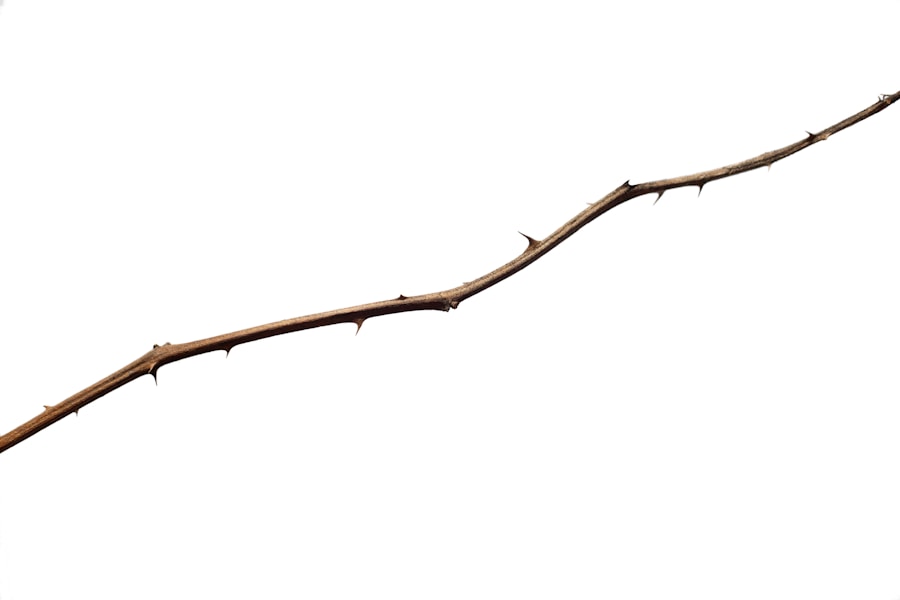Selecting the appropriate height for your hiking sticks is a critical aspect of ensuring a comfortable and effective hiking experience. The right height can significantly influence your posture, balance, and overall energy expenditure while traversing various terrains. When hiking, the body undergoes a series of movements that require coordination and stability.
A hiking stick that is too short or too tall can lead to improper form, which may result in fatigue or even injury over time. Therefore, understanding the importance of choosing the right height is essential for both novice and seasoned hikers. Moreover, the correct height of a hiking stick can enhance your efficiency on the trail.
When the stick is adjusted to the right length, it allows for optimal leverage and support, enabling you to maintain a steady rhythm while walking. This is particularly important during steep ascents or descents, where the risk of slipping or losing balance increases. A well-fitted hiking stick can help distribute weight more evenly across your body, reducing strain on your knees and joints.
Thus, investing time in selecting the right height is not merely a matter of comfort; it is a fundamental aspect of hiking safety and performance.
Key Takeaways
- Choosing the right height for your hiking stick is important for comfort and safety during your hike.
- Factors to consider when choosing the right height include your height, the type of terrain you will be hiking on, and your personal preference.
- Measuring your ideal hiking stick height involves standing up straight with your arms at your sides and having someone measure from the ground to your wrist.
- Adjusting your hiking stick height for different terrains can help improve stability and reduce strain on your body.
- Common mistakes to avoid when choosing hiking stick height include selecting a stick that is too long or too short for your height and not considering the terrain you will be hiking on.
Factors to Consider When Choosing the Right Height
When determining the ideal height for your hiking sticks, several factors come into play. One of the most significant considerations is your own height. Generally, a good rule of thumb is that when you stand upright with your arms relaxed at your sides, the grips of the hiking sticks should reach approximately the height of your wrist.
This guideline serves as a starting point, but individual preferences and specific hiking conditions can lead to variations in this measurement.
Another crucial factor is the type of terrain you plan to navigate. For instance, if you frequently hike in mountainous regions with steep inclines or declines, you may prefer slightly longer sticks to provide additional support during ascents and descents.Conversely, if your hikes are primarily on flat or rolling terrain, shorter sticks may suffice. Additionally, consider the type of hiking you engage in—whether it’s day hikes, multi-day backpacking trips, or casual strolls in nature—as this can influence your choice of stick height as well.
Measuring Your Ideal Hiking Stick Height

To accurately measure your ideal hiking stick height, begin by standing upright on a flat surface with your shoes on, as this will give you a more realistic measurement for outdoor use. With your arms relaxed at your sides, bend your elbows at a 90-degree angle. The height of the grip should ideally align with your wrist bone when your elbows are bent.
This position allows for a natural arm swing while walking and provides optimal leverage when using the sticks. If you are purchasing adjustable hiking sticks, it’s beneficial to test them out in-store if possible. Adjust the length to match your wrist height and take a few steps while holding them.
Pay attention to how they feel during movement; they should not feel cumbersome or awkward. If you are unable to try them out in person, many manufacturers provide sizing charts based on height that can guide you in selecting the appropriate length. However, personal comfort should always take precedence over generic guidelines.
Adjusting Your Hiking Stick Height for Different Terrains
| Terrain | Recommended Hiking Stick Height |
|---|---|
| Flat, even terrain | Stick height at hip level |
| Uphill terrain | Stick height slightly shorter than hip level |
| Downhill terrain | Stick height slightly taller than hip level |
| Rough, uneven terrain | Stick height at shoulder level |
The versatility of adjustable hiking sticks allows hikers to modify their height based on varying terrains encountered during their adventures. For steep ascents, it is often advantageous to shorten the sticks slightly. This adjustment helps maintain an upright posture and allows for better leverage as you push against the ground with each step.
Shorter sticks can also help prevent overextending your arms, which can lead to fatigue over long climbs. Conversely, when descending steep slopes, lengthening the sticks can provide additional stability and support. Longer sticks allow for a more extended reach to help maintain balance and reduce impact on your knees as you navigate downhill.
It’s essential to be mindful of these adjustments throughout your hike; as terrain changes, so should the height of your hiking sticks. This adaptability not only enhances comfort but also contributes to overall safety on challenging trails.
Common Mistakes to Avoid When Choosing Hiking Stick Height
One prevalent mistake hikers make is relying solely on general guidelines without considering their unique body mechanics and preferences. While recommendations based on height can serve as a useful starting point, individual differences such as arm length and personal comfort should play a significant role in determining stick height. Failing to account for these factors can lead to discomfort and inefficiency during hikes.
Another common error is neglecting to adjust stick height based on terrain changes. Many hikers set their sticks to one preferred length at the beginning of their journey and forget about them as they encounter different landscapes. This oversight can lead to unnecessary strain on joints and muscles, particularly during steep climbs or descents where proper support is crucial.
Regularly reassessing and adjusting stick height throughout your hike can help mitigate these issues and enhance overall performance.
Benefits of Using the Correct Height for Your Hiking Sticks

Utilizing hiking sticks that are correctly sized offers numerous benefits that extend beyond mere comfort. One significant advantage is improved stability and balance while navigating uneven terrain. Properly adjusted sticks provide an additional point of contact with the ground, which can help prevent falls and slips on rocky or slippery surfaces.
This added stability is particularly beneficial for older hikers or those with balance issues. Furthermore, using the correct height can lead to reduced fatigue over long distances. When hiking with properly sized sticks, you engage more muscle groups effectively, distributing effort across your body rather than overloading specific joints like knees or hips.
This balanced distribution not only enhances endurance but also allows hikers to cover greater distances without succumbing to exhaustion. The cumulative effect of these benefits makes choosing the right height an essential consideration for anyone looking to enjoy their time on the trails.
How to Test the Fit of Your Hiking Sticks
Testing the fit of your hiking sticks involves more than just measuring their length; it requires an assessment of how they feel during actual movement. After adjusting the sticks to what you believe is the correct height, take them for a short walk on a flat surface. Pay attention to how they feel in your hands—do they allow for a natural arm swing?
Are you able to maintain an upright posture without straining? Additionally, consider performing some basic movements such as bending down or stepping over obstacles while using the sticks. This will help you gauge whether they provide adequate support without causing discomfort or awkwardness in your gait.
If possible, try walking uphill and downhill as well; this will give you insight into how well they adapt to different inclines and declines. A proper fit should feel seamless and intuitive, enhancing rather than hindering your movement.
Tips for Maintaining the Correct Height for Your Hiking Sticks
Maintaining the correct height for your hiking sticks requires regular checks and adjustments throughout their lifespan. First and foremost, familiarize yourself with how to properly adjust your specific model; different brands may have varying mechanisms for height adjustment. Ensure that all locking mechanisms are functioning correctly before each hike to prevent any unexpected collapses during use.
Additionally, consider marking your preferred heights on the sticks with a permanent marker or tape for quick reference during hikes.
This can save time when adjusting them on the trail and ensure consistency in your setup. Regularly inspect your hiking sticks for wear and tear; components such as grips and locking mechanisms may degrade over time, affecting their performance and safety.By staying vigilant about maintenance and adjustments, you can ensure that your hiking sticks remain an effective tool for enhancing your outdoor adventures.
When determining how tall hiking sticks should be, it is important to consider factors such as your height, the terrain you will be hiking on, and your personal comfort. For more information on how to choose the right hiking sticks for your next adventure, check out this article on travelers leaving illusions behind. This article provides valuable insights on the importance of being prepared and equipped for your travels.
FAQs
What are hiking sticks?
Hiking sticks, also known as trekking poles, are a pair of poles used by hikers to provide stability and support while walking on uneven terrain.
How tall should hiking sticks be?
The ideal height for hiking sticks is generally considered to be when your elbow is at a 90-degree angle when holding the poles. This allows for proper support and balance while hiking.
How do I measure the correct height for hiking sticks?
To measure the correct height for hiking sticks, stand with your arms at your sides and bend your elbows at a 90-degree angle. The hiking sticks should be adjusted so that the handles are at this level when you hold them.
Are there adjustable hiking sticks available?
Yes, there are adjustable hiking sticks available that can be easily customized to the desired height. This allows for flexibility and comfort for hikers of different heights.
What are the benefits of using hiking sticks?
Using hiking sticks can help reduce strain on the knees and joints, provide stability on uneven terrain, and improve balance while hiking. They can also help to increase speed and efficiency while walking.
